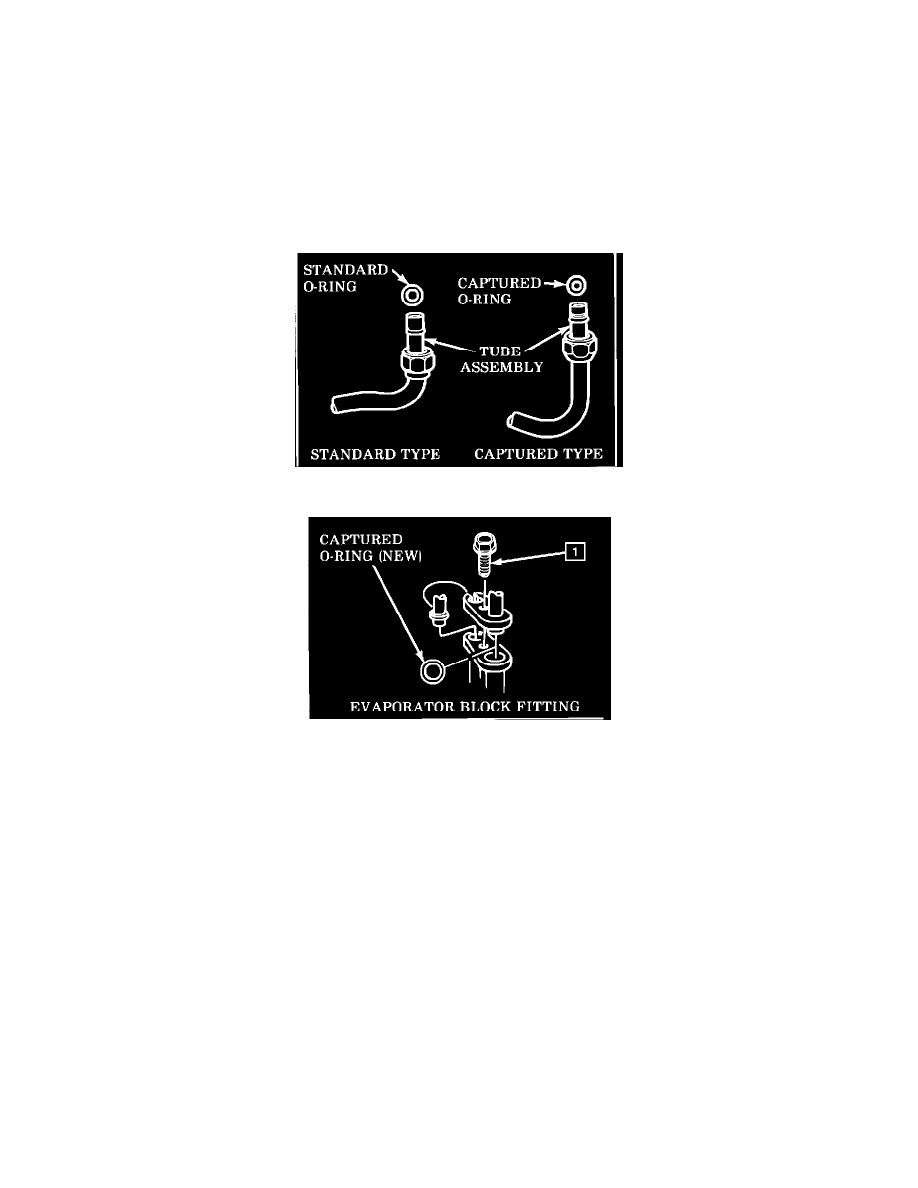Cimarron V6-173 2.8L (1986)

It is extremely important that the refrigerant system has the proper oil charge. Failure to maintain the proper oil charge may result in
compressor damage and poor performance.
6.
REASSEMBLE AIR CONDITIONING REFRIGERANT SYSTEM -
A.
Install the air conditioning compressor on the vehicle.
B.
Install the accumulator. The accumulator should remain capped until just prior to making final air conditioning system connections.
C.
Replace the O-ring on the expansion (orifice) tube, if the expansion tube is reused. Lubricate the O-ring with 525 viscosity refrigerant oil
. Insert the expansion tube into the liquid line (smaller screen end first) and push until the expansion tube reaches a firm stop. This
indicates proper seating of the O-ring.
O-Ring (Standard and Captured)
O-Ring Location
D.
Install new G.M. approved service replacement air conditioning O-rings at all disassembled fittings, except where provided on new
componenets. The connection fitting design should be carefully identified to ensure installation of the correct air conditioning service
replacement O-ring, see Figure 6. Some connections will implement a "captured" O-ring design fitting that uses a groove to retain the
O-ring, while others do not have a groove and use a "non-captured" or "standard" O-ring. Before installation, verify that both O-rings
and fittings have not been nicked or deformed. Always slip the O-ring onto the flange tube to ensure proper locating and sealing. Failure
to use the proper service replacement parts and procedures may result in excessive Refrigerant 12 leakage.
E.
Connect all refrigerant lines and hoses. Tighten the connections following the "HANDLING OF REFRIGERANT LINES AND
FITTINGS" procedure as outlined in the appropriate Service Information Manual.
7.
EVACUATE AND CHARGE REFRIGERANT SYSTEM -
A.
Evacuate the air conditioning system until a vacuum of 95-98 kPa (28-29 In. Hg.) or altitude adjusted is attained and can be held for 5
minutes, without the vacuum pump operating. See "DISCHARGING, ADDING OIL, EVACUATING AND CHARGING" procedures
as outlined in the appropriate Service Information Manual. When evacuating, the inability to initially draw a vacuum does not
necessarily indicate a system leak since proper evacuation vacuum levels will not be obtained until all of the liquid R-11 boils off and is
evacuated. It is normal for the evacuation vacuum level to remain low (5-20 In. Hg.) for a period of time (5 minutes or longer depending
if liquid R-11 was left in the system).
It is extremely important that the refrigerant system is properly evacuated.
Failure to evacuate the refrigerant system may result in compressor damage
and poor performance.
